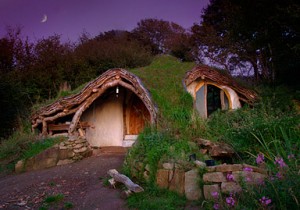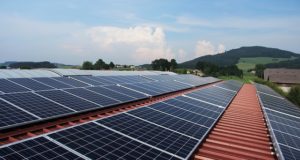There are many different ways that people consider making their homes more in turn with their environment, and by doing so, increasing the houses’ energy efficiency. One of the largest benefits of the Green Revolution has been the birth of alternative energies and better ways to remove ourselves from the dependence lifestyle of previous years.
While we commonly look at high-tech (and often high initial cost) methods to improve our energy independence, sometimes we need to step back and look at the basics and see if perhaps there is a more cost effective and simplistic approach.
 When you are deciding on structural elements to increase the energy independence of your home, a few things to keep in mind are how you plan to heat and insulate. When it comes to heating, incorporating a wood-burning stove can provide an efficient way to heat your home as well as to cook. If you go one step further, you can add a stone or plaster lump to your flue to hold and slowly release heat. This can come in especially useful when you are using the stove to cook at night, as you then do not need to keep it fired up all night.
When you are deciding on structural elements to increase the energy independence of your home, a few things to keep in mind are how you plan to heat and insulate. When it comes to heating, incorporating a wood-burning stove can provide an efficient way to heat your home as well as to cook. If you go one step further, you can add a stone or plaster lump to your flue to hold and slowly release heat. This can come in especially useful when you are using the stove to cook at night, as you then do not need to keep it fired up all night.
As a further example, consider what a family in Wales managed to do while building a house entirely on their own. They built an incredibly well-insulated home using bales of hay. A layer of bales was placed under the floor, in each wall, and across the roof as well. The straw was covered with sheets of plastic to prevent water damage and rot, and the home was further insulated by being partially dug into a hill and by covering the roof with a layer of sod.
The family used a wood-burning stove for both heating and cooking, and the stove’s flue makes use of a stone and plaster lump to retain heat as described above. The house is located on a large, wooded lot, and the family makes extensive use of woodcuttings and scraps for fuel. Trees from the lot were used for the house’s frame and rafters, and leftover pieces were stored for fuel.
Stone and mud from the excavation were used during the construction of the foundation and walls, further helping to insulate the house from temperature changes. Lime plaster was used to finish the interior walls, which allows the walls to “breathe” and maintain a more stable interior temperature during both summer and winter. Note that the interior layers of hay bales would need to be replaced every ten to twenty years, depending on how damp a particular climate is, and that this house was constructed to allow for maintenance of that layer of protection.
With the addition of solar panels for small amounts of power, the house is 100% independent from the electrical grid. The refrigerator is even dug partly into the ground to reduce the need for electricity to keep food chilled. A place like this is completely removed from depending on the big energy monopolies of modern society and will not suffer any adverse effects from power outages. What’s more, this entire home was built for less than the cost of a used car. With about 1,500 hours of manpower and $6,000 dollars, anyone can have an energy efficient home that completely removes the need for an outside energy source.
The house was built with maximum regard for energy efficiency and the environment, and, by reciprocation, gives the family a unique opportunity to save all the energy they wish. Designing your own home is a lot of fun and allows you to customize and enjoy something unique and efficient instead of living in a mass-produced box designed for the maximum profit and convenience of the energy and construction industries.
For our national energy consumption to decrease, we must each reduce consumption and dramatically increase the productivity of our land. This will require developing infrastructure and skills to enable locally self-reliant living. The simplest, sustainable solutions involve small-scale housing systems centered on individual or small groups of dwellings. There is significant and growing enthusiasm at the grassroots level to start implementing these self-sufficient systems. This enthusiasm comes from a combination of intellectual concern and the innate appeal of not being at the whim of large, corporate monopolies.
Our society is operating under the assumption that economic liberalism and the free market will provide technological solutions for our future energy needs, the effects of climate change, and any other problems that we might encounter. It is true that the free market and technological progress have extended our capabilities and even solved certain problems. However, all of this has been the product of increasing consumption of fossil fuels. Never before have we achieved innovation by the essentially passive continuation of an unchanging method.
By altering how we build, we can move beyond the need for energy and market dependence that has been the staple of our lives for the past 200 years.
 Off The Grid News Better Ideas For Off The Grid Living
Off The Grid News Better Ideas For Off The Grid Living




